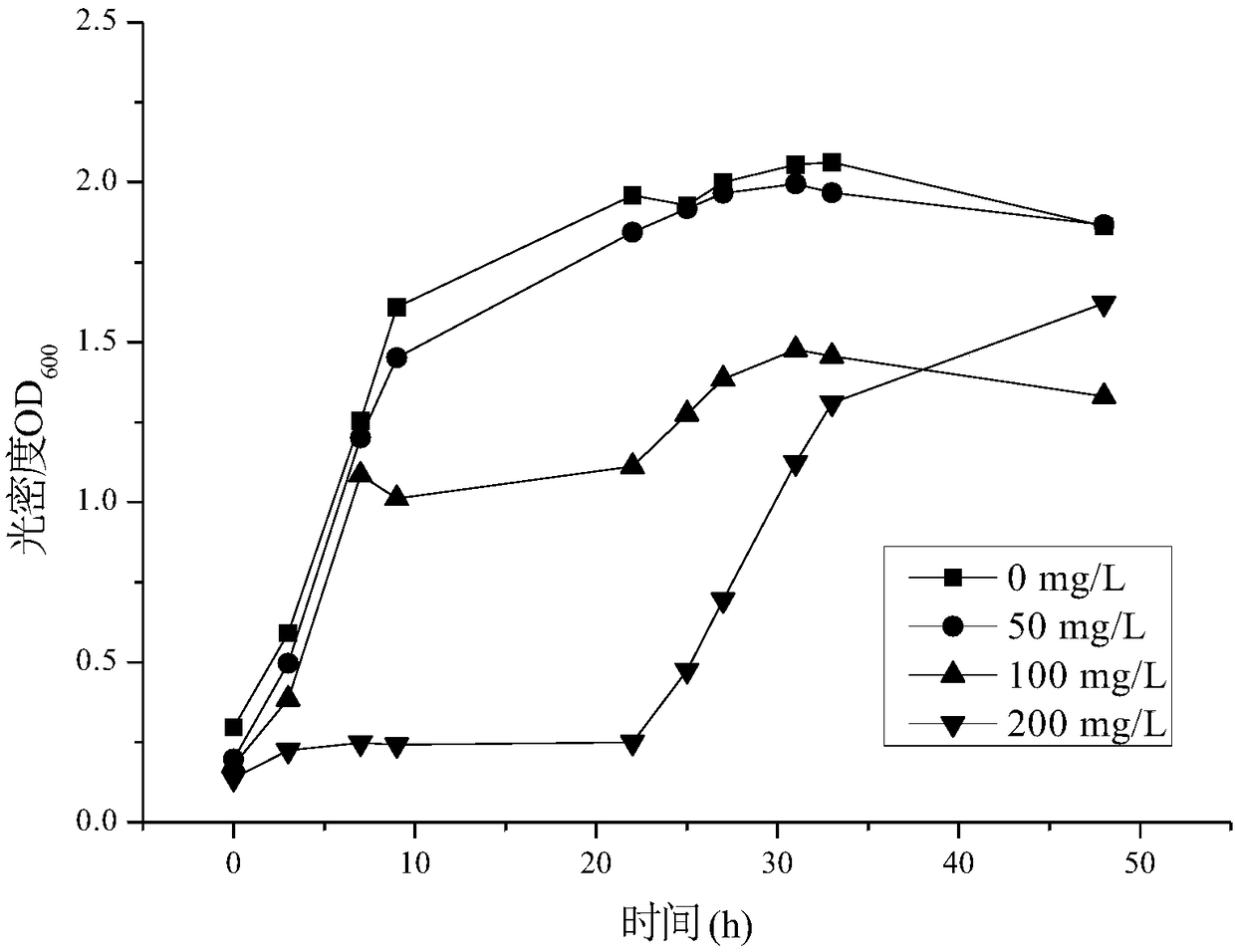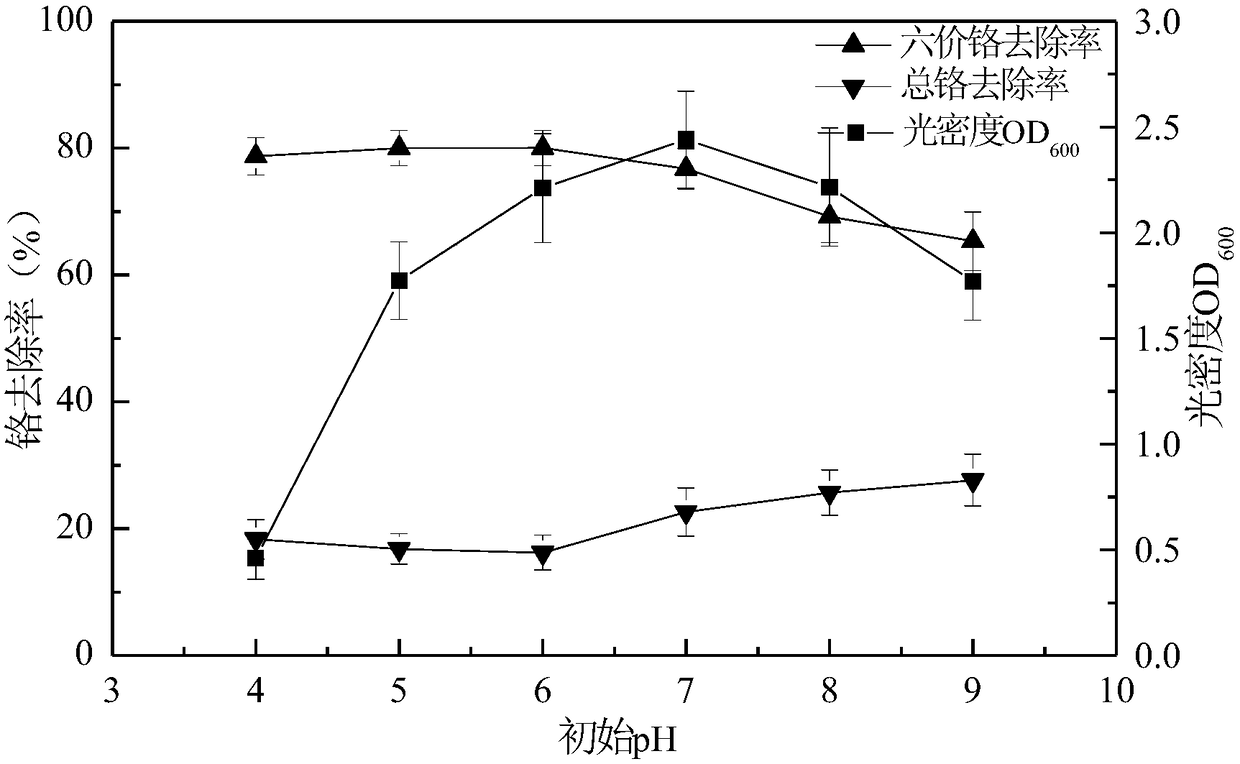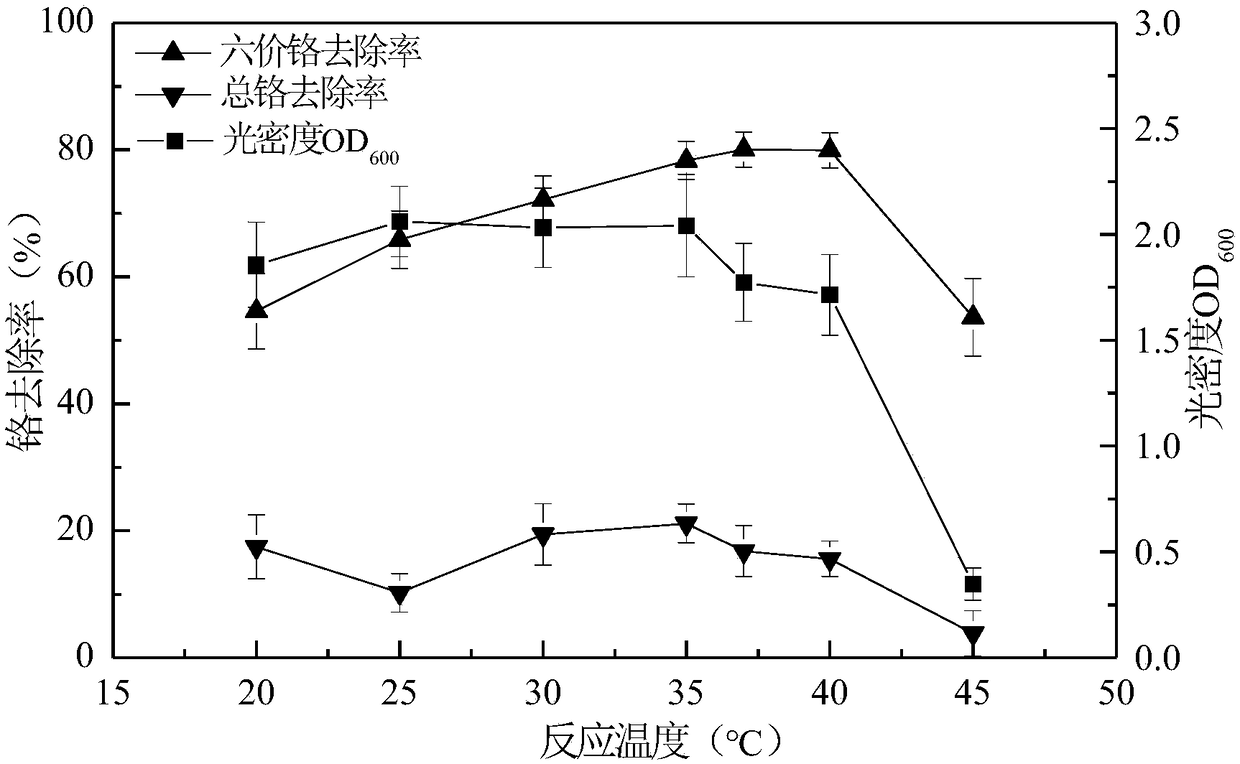Preparation method and application of leersia hexandra swartz endophytic bacterium capable of reducing hexavalent chromium
A technology of endophytic bacteria and hexavalent chromium, which is applied in the field of preparation of endophytic bacteria
- Summary
- Abstract
- Description
- Claims
- Application Information
AI Technical Summary
Problems solved by technology
Method used
Image
Examples
Embodiment 1
[0022] Example 1 Isolation and Screening of Lee's Wormwood Chromium-Reducing Endophytic Bacteria
[0023] Firstly, collect Lishihe plants from the Phytoremediation Laboratory of the School of Environmental Science and Engineering, Guilin University of Technology, take appropriate amount of healthy Lishihe leaves, wash them with water, soak them in 70% alcohol for 40s under sterile conditions, and then wash them with 2.5% sodium hypochlorite Soak for 2 minutes, and finally rinse 6 times with sterile water to remove the disinfectant attached to the surface of the material. Under aseptic conditions, use the sterile water rinsed for the last time to spread on the beef extract peptone solid plate medium. After cultivation, no microorganisms grow out, indicating that the surface is thoroughly disinfected. Under sterile conditions, take an appropriate amount of surface-sterilized leaf tissue, add 1mL of 0.9% sodium chloride solution to fully grind, take 1mL of the grinding solution a...
Embodiment 2
[0027] The influence of embodiment 2 Cr (VI) concentration on the growth of Y04 bacterial strain
[0028] After the strains stored on the slant of the test tube were activated, a loop was picked and inoculated in a 100 mL Erlenmeyer flask containing 40 mL of liquid medium, and cultured with shaking at 37 °C and 120 r / min for 24 h as the seed liquid. The seed solution was inoculated into beef extract peptone liquid medium (100mL / 250mL triangular flask) with Cr(VI) concentration of 50mg / L, 100mg / L and 200mg / L respectively according to the inoculation amount of 10%, and placed at a constant temperature of 37°C Shake culture at 120 r / min on a horizontal shaker. During the cultivation period, 5 mL samples were taken under sterile conditions at regular intervals, and the optical density OD value at a wavelength of 600 nm was measured. The results are attached figure 1 shown. When the Cr(VI) concentration in the medium was 50mg / L and 100mg / L, within the first 6h, the growth trend ...
Embodiment 3
[0029] The influence of embodiment 3 initial pH on Y04 bacterial strain reduction Cr (VI)
[0030] The strain Y04 stored on the slant of the test tube was activated by beef extract peptone solid medium plate, cultured in a constant temperature incubator at 37°C for 24 hours, then picked 2 rings and inoculated into a 250mL Erlenmeyer flask containing 100mL beef extract peptone liquid medium, at 37°C, After 24 hours of shaking culture at 120r / min, it was used as the seed solution.
[0031] The seed solution was inoculated in the beef extract peptone liquid medium (filling volume 100mL / 250mL triangular flask) containing Cr(VI) concentration of 100mg / L by 15% inoculation amount, and the pH was adjusted with 2M sodium hydroxide and hydrochloric acid solution Finally, eight layers of gauze were sealed, and placed on a constant temperature horizontal shaker at 37°C for 120r / min shaking culture. After culturing for 48 hours, an appropriate amount of culture solution was sampled under...
PUM
 Login to View More
Login to View More Abstract
Description
Claims
Application Information
 Login to View More
Login to View More - R&D
- Intellectual Property
- Life Sciences
- Materials
- Tech Scout
- Unparalleled Data Quality
- Higher Quality Content
- 60% Fewer Hallucinations
Browse by: Latest US Patents, China's latest patents, Technical Efficacy Thesaurus, Application Domain, Technology Topic, Popular Technical Reports.
© 2025 PatSnap. All rights reserved.Legal|Privacy policy|Modern Slavery Act Transparency Statement|Sitemap|About US| Contact US: help@patsnap.com



